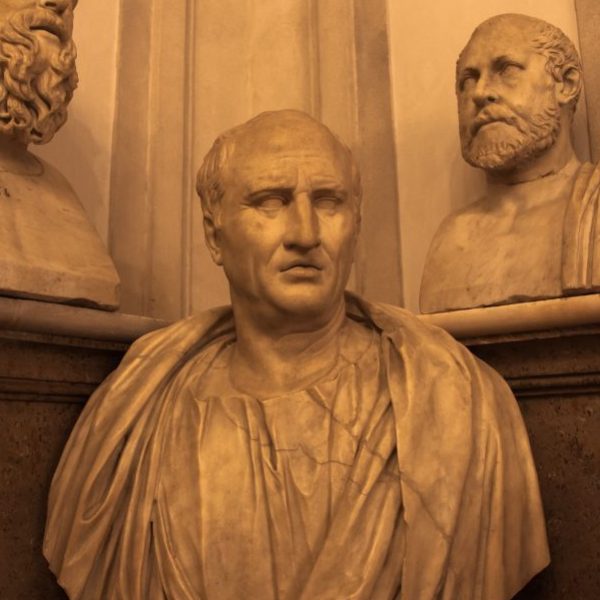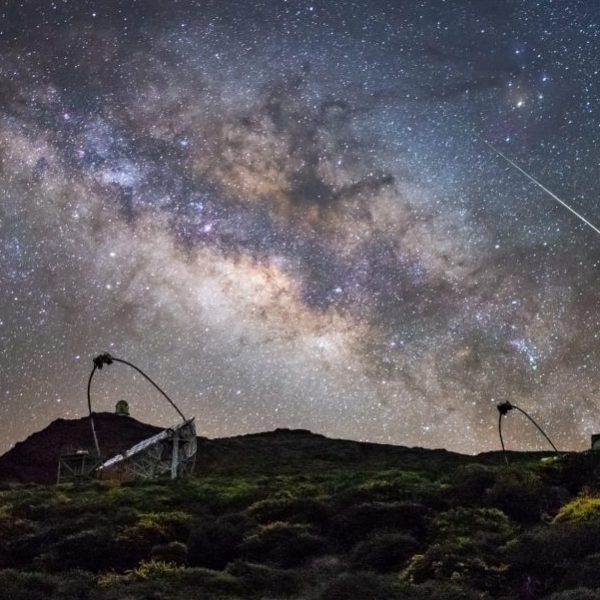Lest We Forget: Life with the Moon
Sarah Underwood—
The ancient philosopher Philolaus believed that the Moon was home to humans fifteen times larger than us as well as much larger animals and plants. He decided on the larger dimensions because the Moon’s days are so much longer than Earth’s. Nearly two and a half millennia later, speculation about life on the Moon has hardly ceased. Of course, today’s researchers do not expect to find humanoids or forests on the moon, instead hoping to find artifacts, traces, some bare bones evidence that will finally tell us that someone else has visited our solar system. As reported by The Huffington Post, an Arizona State University professor and undergraduate student have recently submitted a paper to the International Academy of Astronautics suggesting ways to improve the Search for Extraterrestrial Life (SETI), especially regarding closer examination of the Moon. It might be easy to laugh at first at the thought of life on the Moon—we sent men to the Moon, and they did not find anyone else, did they?—but as Bernd Brunner shows in Moon: A Brief History, it may be impossible for us Earthlings to ever stop trying to find something familiar on our nearest neighbor.
 For a force strong enough to move oceans, inspire Romantic poetry, and induce lycanthropy, the Moon’s celebrated qualities change frequently with our relationship to it. Our clocks do not show the phases of the moon so that we might plan our journeys during the times that will provide the most moonlight. Whether we call it light pollution or necessary security measures, but we have seen a night sky’s natural lights entirely blocked out by our own artificial ones. Man walking on the Moon is forty-year-old history. It is hard to imagine a time when “most people saw little difference between flying above the surface of the Earth and traveling to other celestial bodies,” but in fact that era only ended in 1783 with the first balloon flight. Brunner argues that a different moon has existed for each culture and generation, because each group of people has had a unique frame of reference, but until recently most have felt a much closer connection to our satellite. Ancient religions often anthropomorphized the Sun along with the Moon, and the two were frequently major gods or goddesses. Various peoples have seen faces or at least human images in the dark patches on the moon. Writers from the 1500s to the 1800s envisioned utopian and dystopian communities of humanoids living on the Moon. Now, modern Wiccans venerate a female moon in their rituals, an attempt to “restore a lost…faith in nature and the moon.”
For a force strong enough to move oceans, inspire Romantic poetry, and induce lycanthropy, the Moon’s celebrated qualities change frequently with our relationship to it. Our clocks do not show the phases of the moon so that we might plan our journeys during the times that will provide the most moonlight. Whether we call it light pollution or necessary security measures, but we have seen a night sky’s natural lights entirely blocked out by our own artificial ones. Man walking on the Moon is forty-year-old history. It is hard to imagine a time when “most people saw little difference between flying above the surface of the Earth and traveling to other celestial bodies,” but in fact that era only ended in 1783 with the first balloon flight. Brunner argues that a different moon has existed for each culture and generation, because each group of people has had a unique frame of reference, but until recently most have felt a much closer connection to our satellite. Ancient religions often anthropomorphized the Sun along with the Moon, and the two were frequently major gods or goddesses. Various peoples have seen faces or at least human images in the dark patches on the moon. Writers from the 1500s to the 1800s envisioned utopian and dystopian communities of humanoids living on the Moon. Now, modern Wiccans venerate a female moon in their rituals, an attempt to “restore a lost…faith in nature and the moon.”
The importance of the Moon’s relationship with Earth and its inhabitants explains why we have spent so much time just looking at a big, white circle. Around 1600, William Gilbert presented Elizabeth I of England with a lunar map that introduced the first lunar nomenclature, having taken the liberty of naming the Moon’s “seas” and “land.” After the telescope’s invention, scientists stared at the Moon with an intensity that would only be replicated by middle-aged women peering into a mall window during an after-Christmas sale. Galileo is one of the most famous to have created a lunar chart, but others grew in importance with their contemporaries. Philip IV of Spain demanded that a map by Michael van Langren include moon features named after the Spanish royal family. While the Oceanus Philippicus is now the Oceanus Procellarum, we do, happily, still have the crater Langrenus.
Though less than half of the world’s population is old enough to remember, one of the most important forms of moon-gazing occurred via television. The broadcasted moon landing contains perhaps the most controversial images of our satellite’s surface, although as Brunner quickly shows, conspiracy theories have been disproven repeatedly over the past decades. Of course, what would the moon be without a little controversy? A staged moon landing is nearly on par with an 1835 article from the New York Sun, in which an “imaginative” reporter claimed an explorer had seen “sheep, pygmy zebra, [and] unicorn roaming lunar grasslands.” And I assume if Armstrong and Aldrin had brought back a unicorn, life on the Moon would still be a controversial subject.
Sarah Underwood is a graduate of the College of William and Mary and a former Yale University Press intern. Her column, Lest We Forget, appears on the Yale Press Log.



